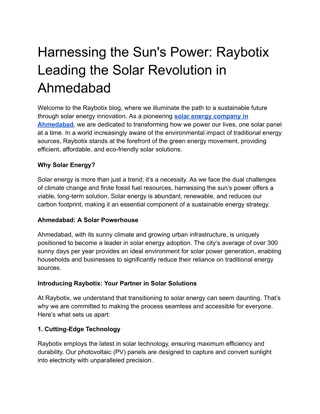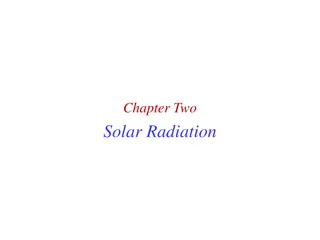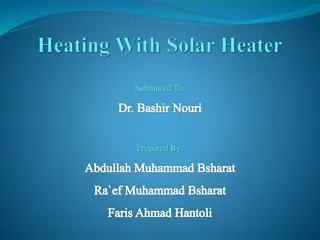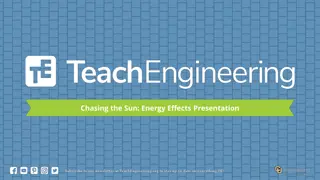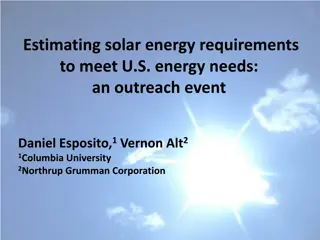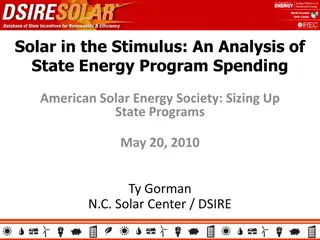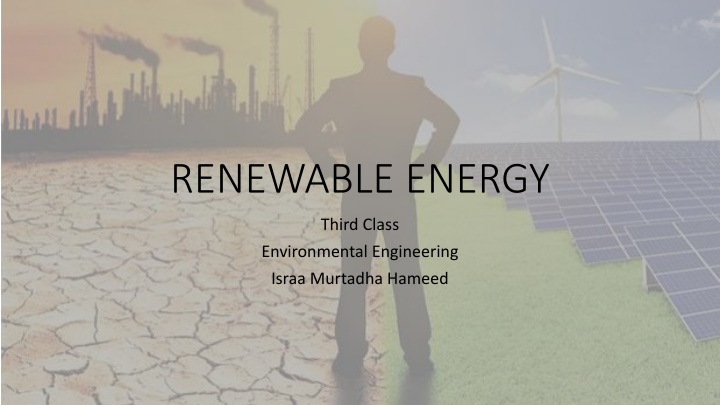
Uses of Solar Energy in Environmental Engineering
Solar energy is harnessed for various purposes in environmental engineering, including solar drying, desalination, passive solar techniques, and active solar techniques. Solar technologies are utilized to reduce energy consumption and promote sustainable practices in different industries.
Download Presentation

Please find below an Image/Link to download the presentation.
The content on the website is provided AS IS for your information and personal use only. It may not be sold, licensed, or shared on other websites without obtaining consent from the author. If you encounter any issues during the download, it is possible that the publisher has removed the file from their server.
You are allowed to download the files provided on this website for personal or commercial use, subject to the condition that they are used lawfully. All files are the property of their respective owners.
The content on the website is provided AS IS for your information and personal use only. It may not be sold, licensed, or shared on other websites without obtaining consent from the author.
E N D
Presentation Transcript
RENEWABLE ENERGY Third Class Environmental Engineering Israa Murtadha Hameed
Types of Solar energy uses Types of Solar energy uses Solar energy has been used by human for a lot of purposes; the following are the most common uses: 1. Solar drying Solar dryers have been used primarily by the agricultural industry. The objective in drying an agricultural product is to reduce its moisture contents to a level that prevents deterioration within a period of time regarded as the safe storage period. Fig. 9 shows examples of solar drying.
2. Solar desalination 2. Solar desalination The lack of water was always a problem to humanity. Therefore, among the first attempts to harness solar energy was the development of equipment suitable for the desalination of seawater (Fig. 10). Solar distillation has been in practice for a long time.
3. Passive solar techniques 3. Passive solar techniques These techniques include orienting the construction of a building toward the Sun, designing the correct sizing of openings, selecting materials with favorable thermal mass or light dispersing properties, and designing spaces that circulate air naturally. Passive solar technologies reduce the need for alternative energy sources and are generally considered demand side technologies. Fig. 11 gives an example of the passive solar technique.
4. Active solar techniques 4. Active solar techniques These techniques include the use of photovoltaic panels, or solar thermal collectors, which use either electrical or mechanical equipment, to convert sunlight into useful power outputs. Active solar technologies increase the amount of energy produced and are considered supply side technologies. Fig. 12 gives an example of the active solar technique.









